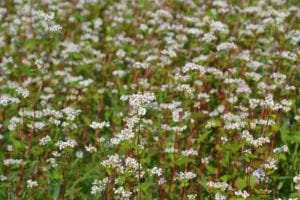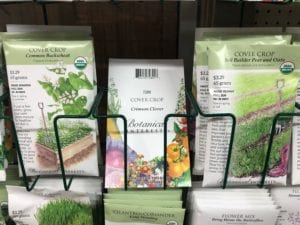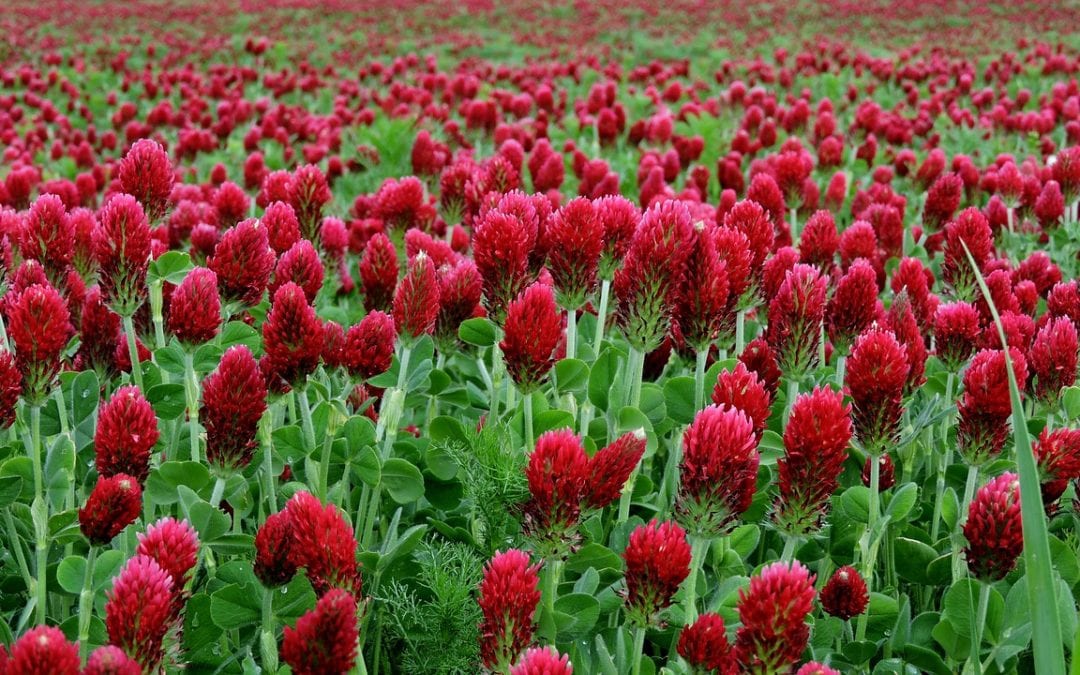Have you heard of using cover crops to boost the nutrients in your soil? We haven’t talked much about cover crops because we are always encouraging you to plant vegetables during each of our wonderful growing seasons. The fact remains that some people prefer to grow vegetables only one season of the year. It’s just a preference, and that’s ok. But it’s also a fact that your soils shouldn’t remain fallow or bare. Even if you are not planting a fall vegetable garden, there is still one thing that you should be planting to make sure that the next time you plant your soil will be primed and ready, and that is cover crops.



6 Reasons to Plant Cover Crops
1. Cover crops effortlessly add nutrients to the soil.
By the simple task of broadcasting seeds, then turning the grown plants into the soil at the correct time, you are able to easily add fertilizer to your garden beds. Cover crops add nitrogen (especially those in the legume family), organic matter and layers of beneficial microorganisms to the soil, increasing the soil’s fertility.
2. Cover crops improve the physical condition of soil.
When cover crops have been turned over and lightly tilled, soil structure, aeration throughout soil, water and nutrient capacity have been dramatically improved. The superfine roots of cover crops penetrate through hard soil and leave behind looser soil with organic matter when they are turned over.
3. Cover crops are inexpensive.
We all know buying fertilizer can be an expensive part of gardening; but using cover crops is a great way to cut the cost! Cover crops are converted into “green manure” once they are turned over into the soil. For the cost of a Starbucks coffee, you can basically purchase a packet of cover crops that will cover around 178 sq. ft. Elbon Rye is purchased at Rainbow Gardens by the pound. Each pound is only 99¢ and a pound covers 100 sq. ft. See? Cheap!
4. Cover crops invite beneficial insects to the garden and fight root knot nematodes.
Cover crops like red clover, hairy vetch, fava beans, and more, produce beautiful little flowers that attract all sorts of beneficial insects and pollinators to your landscape. You and the beneficial insects will get to enjoy the flowers just before you need to turn over your cover crops. (Turn crops just before they set seed.)
Microscopic Root Knot Nematodes are soil dwelling pests that feed on the roots of plants. Plants become stunted, yellow, and die prematurely. Dead plants that have been attacked by root knot nematodes will have galls or knots on their root systems. If your spring garden was plagued by these pests, Elbon Rye as a cover crop planted in fall is your best bet for preventing this from happening again! Read more about Elbon rye for root knot nematode prevention here.
5. Cover crops protect soil from eroding.
Cover crops grow closely together, basically forming a little mat that covers the soil and holds it in place. Do you have a bare area you are constantly replacing the soil in because the rain and weather tends to wash it away when nothing is planted there? Cover crops are your solution. Rain is also allowed to penetrate the soil more evenly because of the mat of plants.
6. Cover crops smother nutrient-sucking weeds.
Where there is bare soil, weeds will grow. It’s a fact, Jack! The same reason that cover crops work for protecting soil from eroding is the same reason they work to crowd out weeds. Seed your cover crops heavily and they will grow close enough together to choke out weeds that compete for nutrients in the soil.
Planting cover crops each season, or any time your soil would otherwise be left bare, is a great gardening habit to develop. Soil building is an ongoing process so each time you plant cover crops, you will have less work to get your soil in tip top shape for any plantings in the future.
Get our guide for how to plant and use cover crops here.
~ The Happy Gardener, Lisa Mulroy


A list of possible cover crops would be very helpful!
Red clover, crimson clover, white clover, oats, buckwheat, alfalfa, annual rye grass, legumes, are all great cover crops.
Thank you!
I agree. Could you give us a list please?
Sure:
Crimson Clover
Vetch
Peas
Soybeans
Annual grasses like rye (elbon), wheat, oats
Buckwheat
Mustard
Alyssum
Thank you for the list. Which of these are more HOA friendly? Besides crimson clover, are there any other clovers you recommend for South Texas?
Sorry this was missed. Clovers can grow somewhat tall and not sure about HOA friendly options. Depends on how strict your HOA is, ya know? Clovers are more of a fall/winter planting. I’m attaching an article that has specific suggestions for South Texas cover crops. They are found with a description at the bottom of this article.